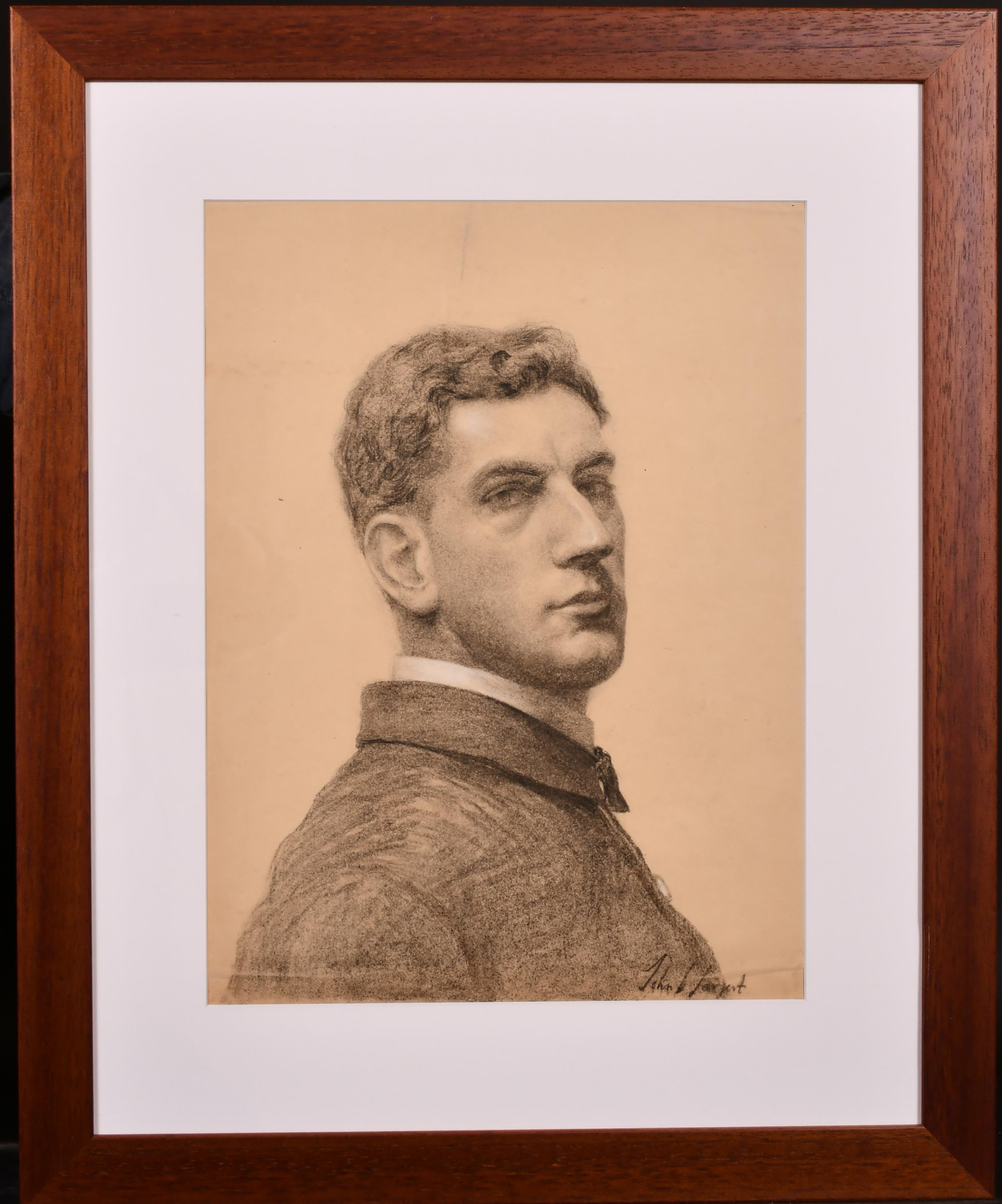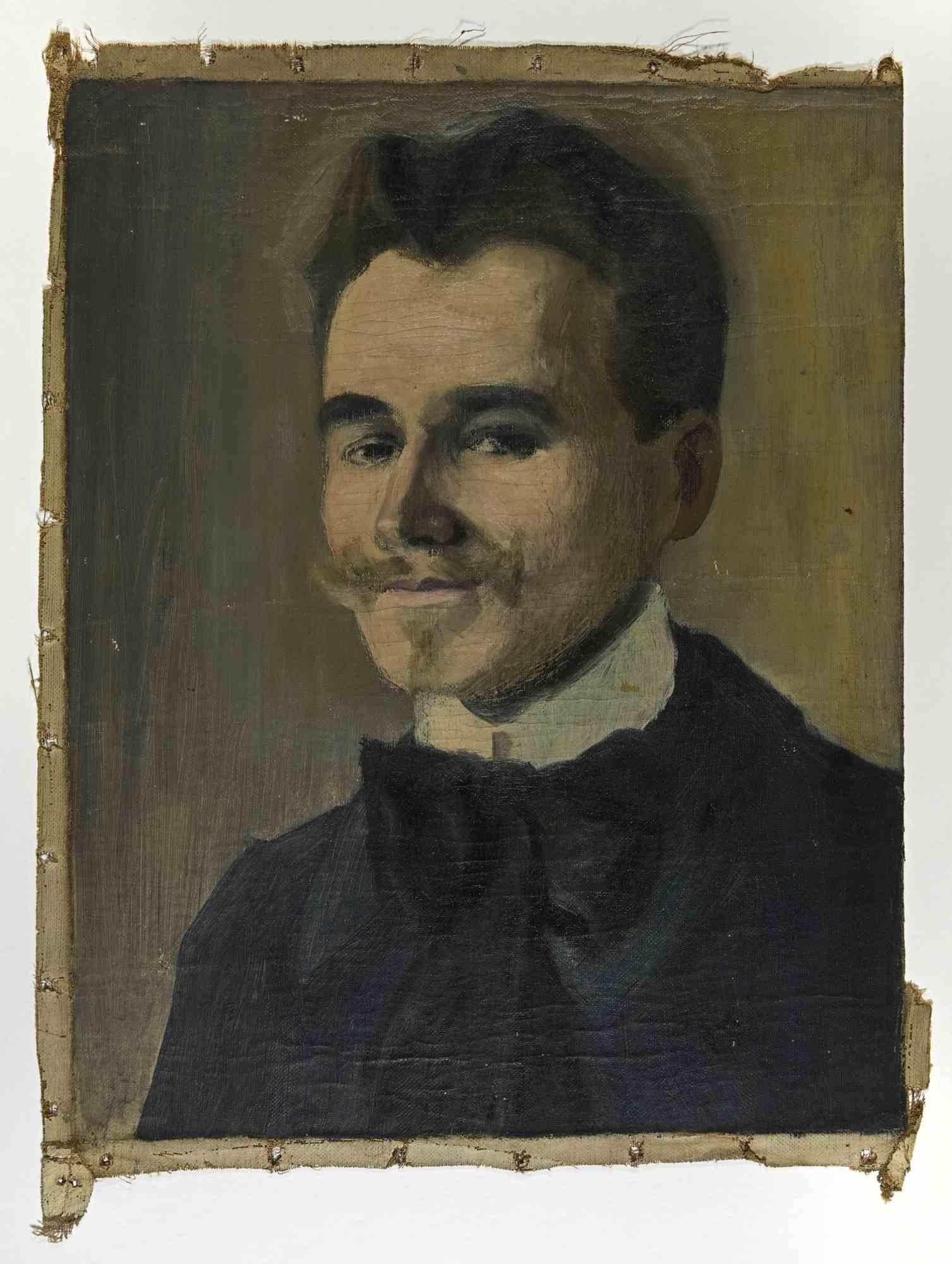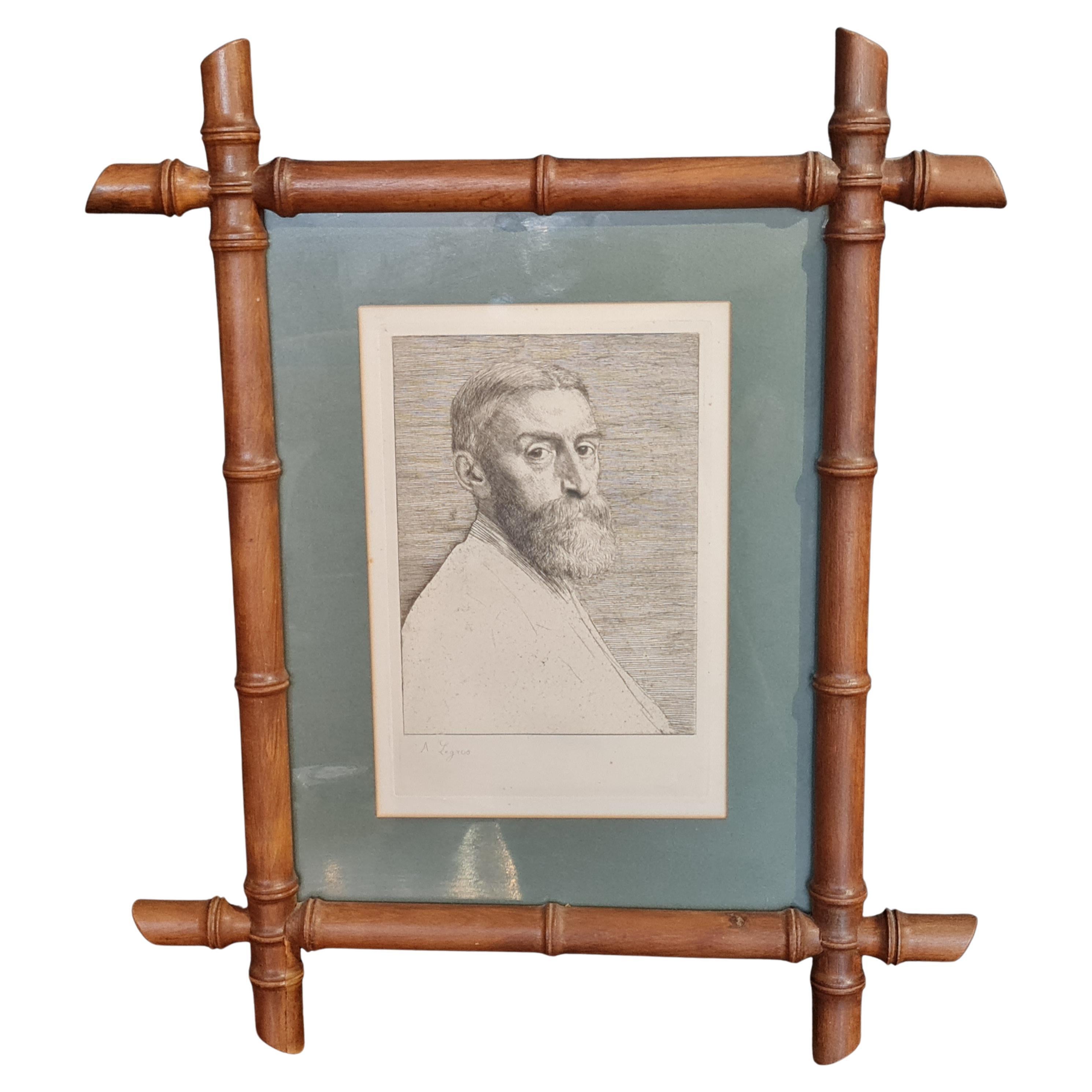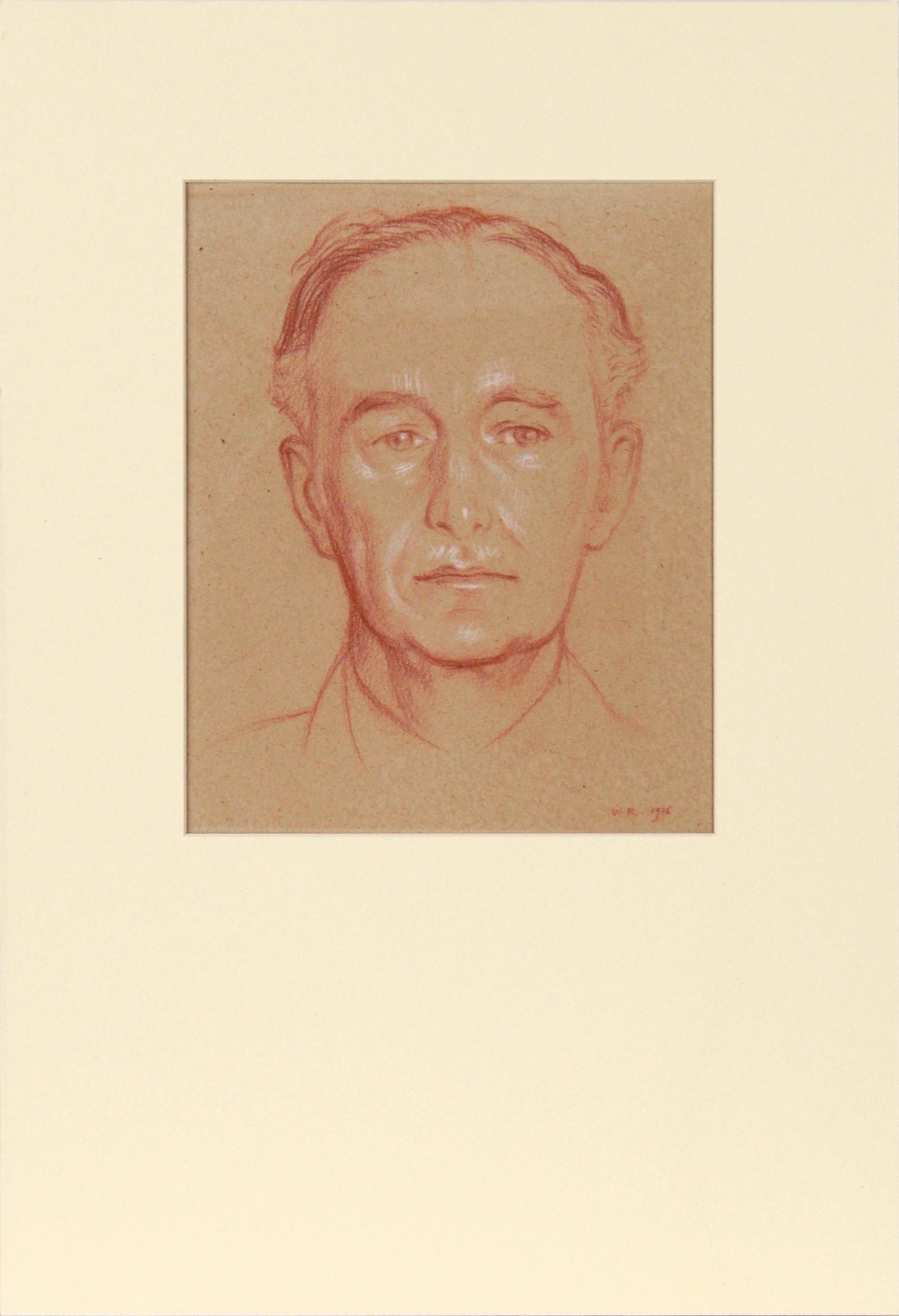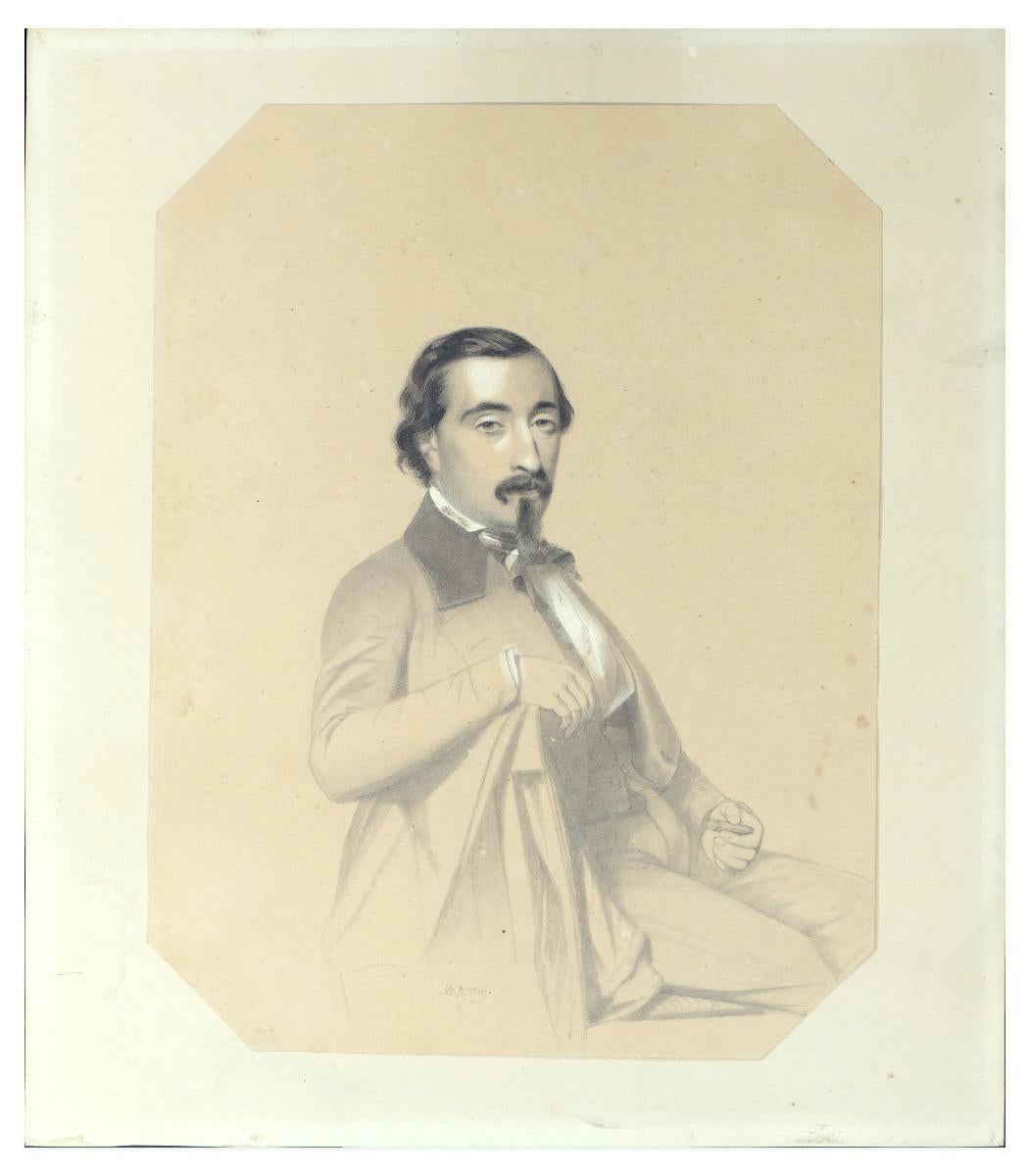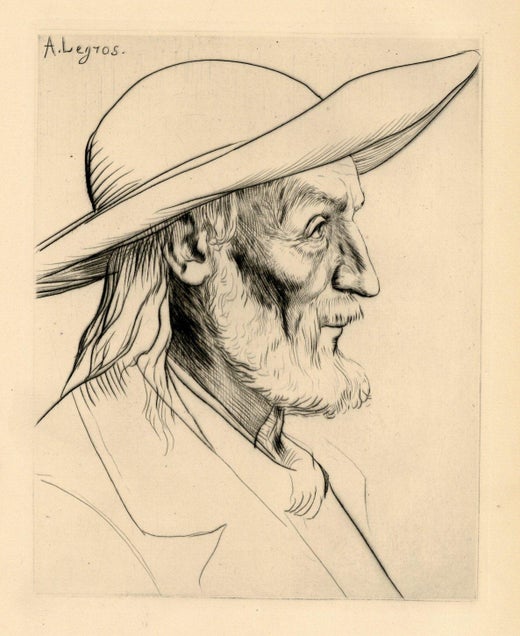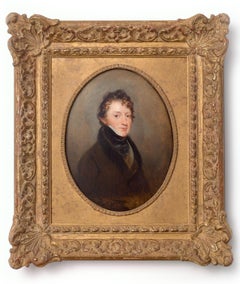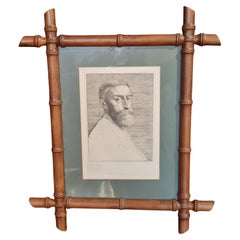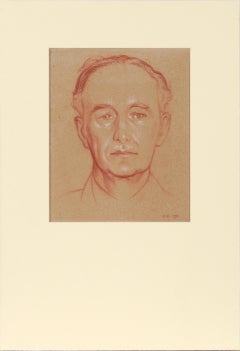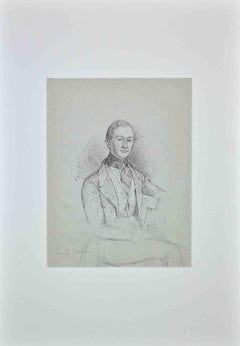Alphonse LegrosPortrait of John Seymour Lucas1907
1907
About the Item
- Creator:Alphonse Legros (1837 - 1911, British)
- Creation Year:1907
- Dimensions:Height: 18.75 in (47.63 cm)Width: 14.25 in (36.2 cm)Depth: 1 in (2.54 cm)
- Medium:
- Period:
- Condition:
- Gallery Location:Douglas, GB
- Reference Number:Seller: No. 1501stDibs: LU2373215343742
Alphonse Legros
Alphonse Legros was a British etcher, painter, sculptor and teacher of French birth. In 1855, he enrolled at the École des Beaux-Arts, Paris. During this period, Legros had a taste for early Netherlandish art and for French Romanticism, which was later superseded by his admiration for Claude, Poussin and Michelangelo. However, his devotion to Holbein proved constant. Legros began etching in 1855; he preferred this medium and produced over 600 plates. Many of his early works are deliberately rough in execution. Legros emerged as a leader of the younger generation of realists, notwithstanding his conspicuous dependence on Courbet. However, this critical success brought no financial security, and in 1863, Legros visited London where he found admirers and patrons. Legros resolved to remain in London. In 1876, Edward John Poynter recommended Legros to succeed him as Professor of Fine Art at the Slade School. Legros occupied this position until 1893 and introduced etching and modeling to the syllabus. He was a founder-member of the Society of Painter-Etchers in 1881 and of the Society of Medallists in 1885; the revival of the cast art medal was due almost entirely to his example. With its classically inspired economy of form and design, Legros's interpretation of his realist subject-matter exerted a decisive influence in England on the representation of peasant life in the 1880s. He had a taste for the macabre. In the etchings Death of the Vagabond and Death and the Wood-cutter, these themes coalesce in a stark blend of realism and fantasy which is simultaneously elevated and humane.
- ShippingRetrieving quote...Shipping from: Douglas, United Kingdom
- Return Policy
More From This Seller
View AllEarly 20th Century Portrait Drawings and Watercolors
Paper, Charcoal
1940s Portrait Drawings and Watercolors
Pencil, Paper
1940s Portrait Drawings and Watercolors
Pencil
1830s Portrait Paintings
Oil, Panel
Late 18th Century Portrait Drawings and Watercolors
Paper, Pencil
1920s Portrait Drawings and Watercolors
Paper, Pencil
You May Also Like
1850s Contemporary Portrait Paintings
Oil, Canvas
Antique Late 19th Century British Late Victorian Prints
Parchment Paper
1930s Realist Portrait Drawings and Watercolors
Conté, Handmade Paper
Late 19th Century Modern Figurative Drawings and Watercolors
Pencil
19th Century Modern Figurative Drawings and Watercolors
Mixed Media
Early 20th Century Modern Figurative Drawings and Watercolors
Pencil
